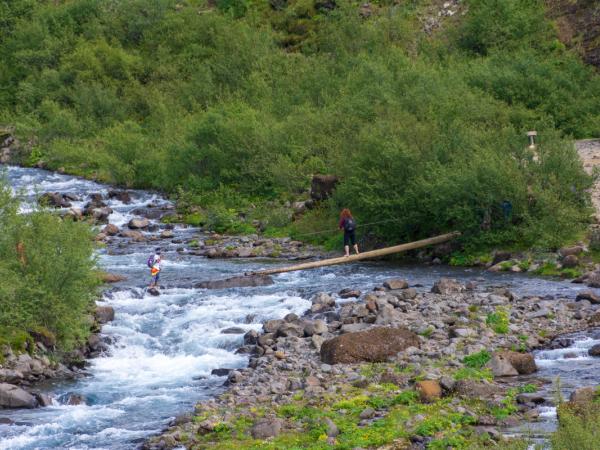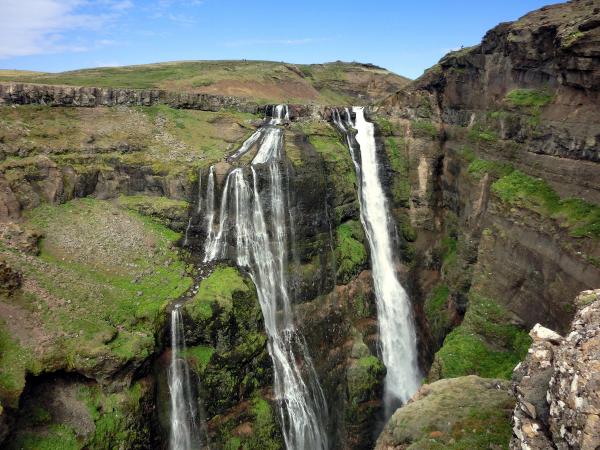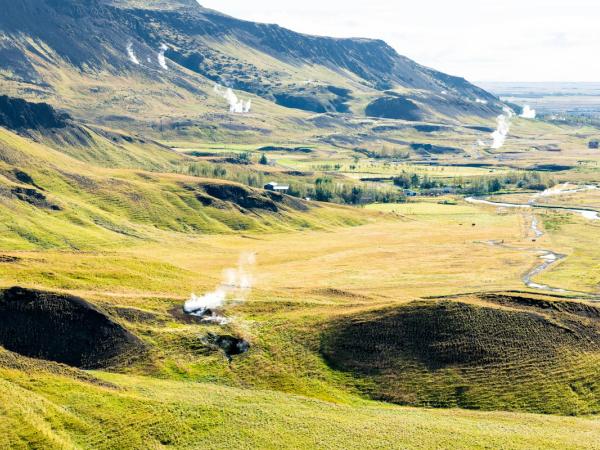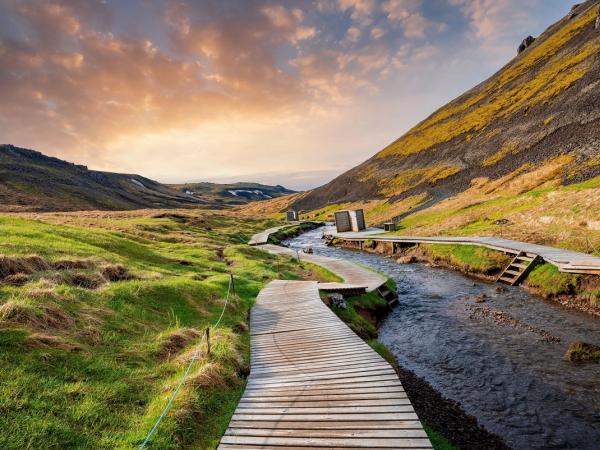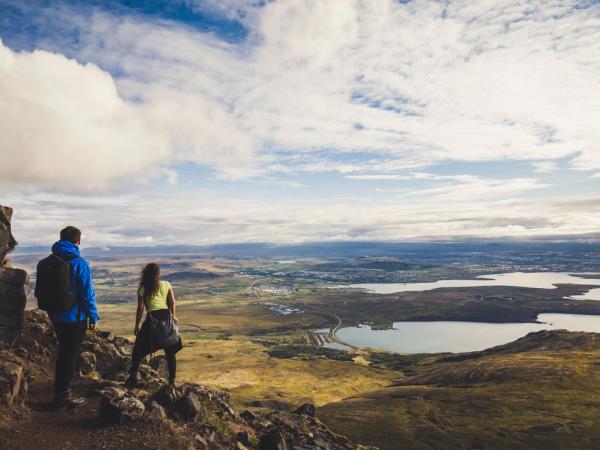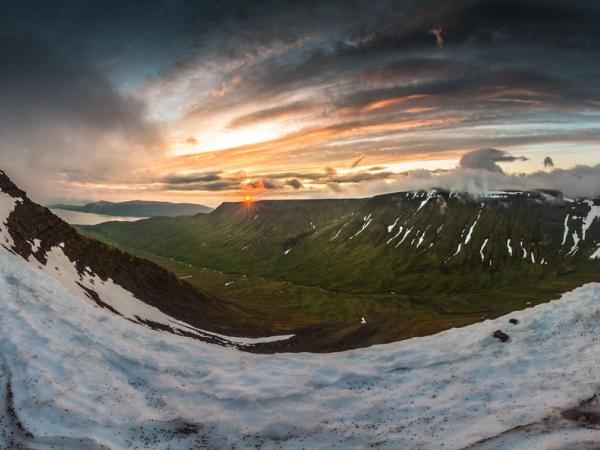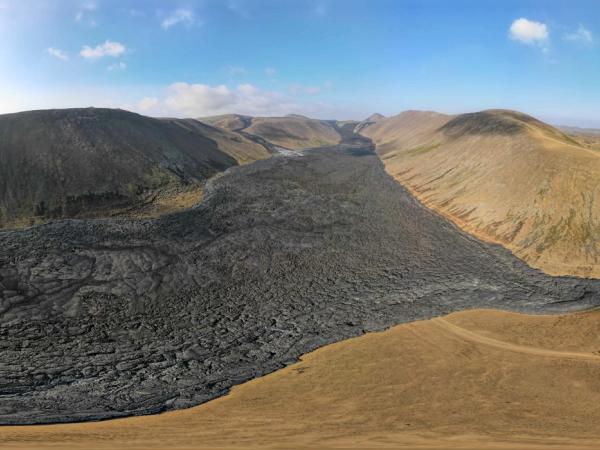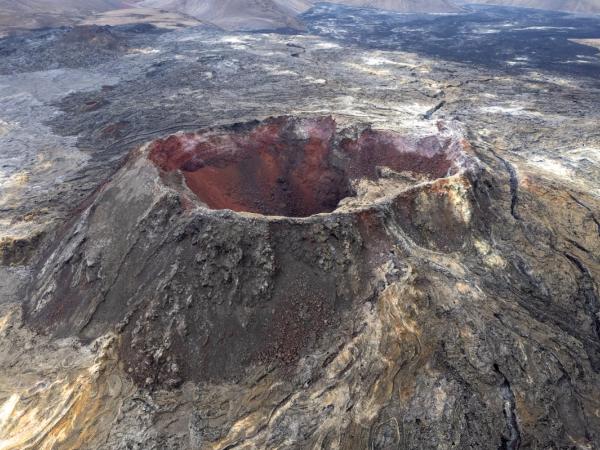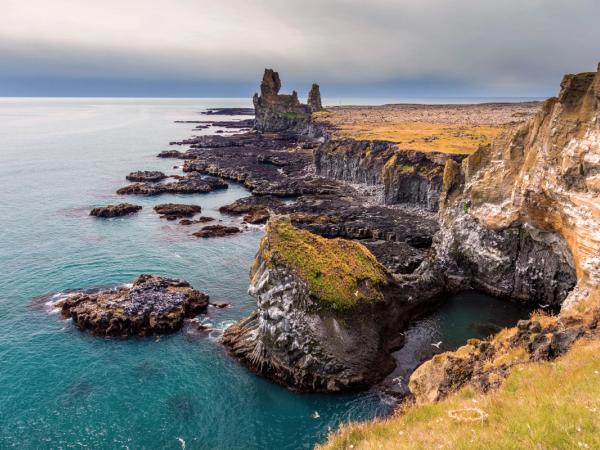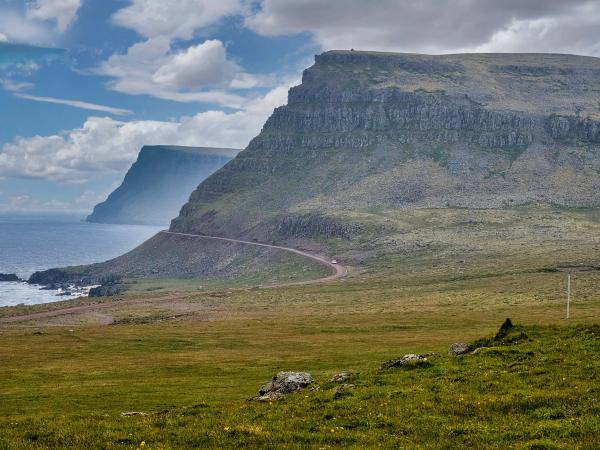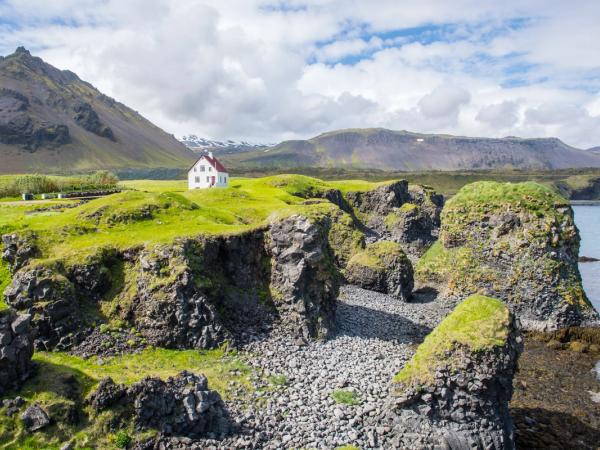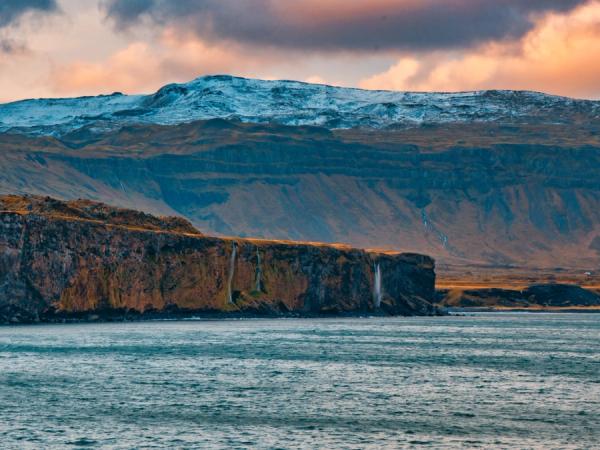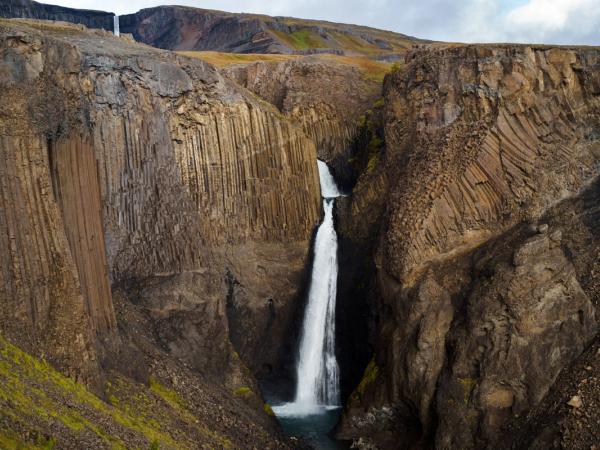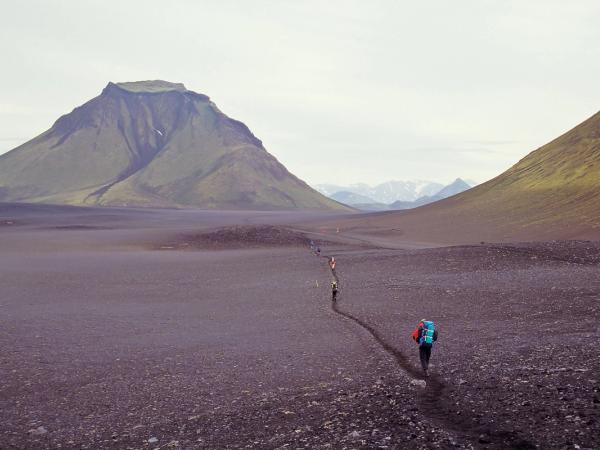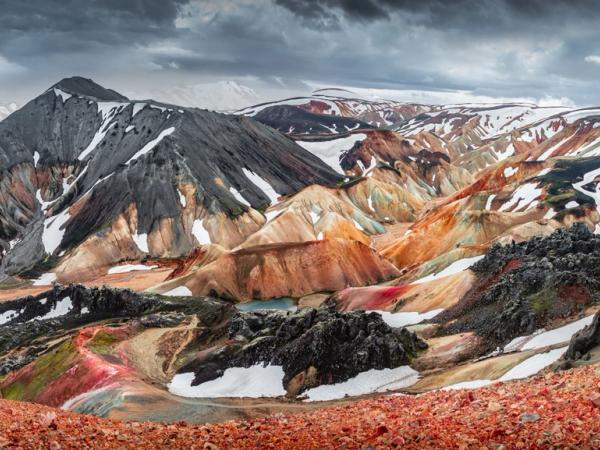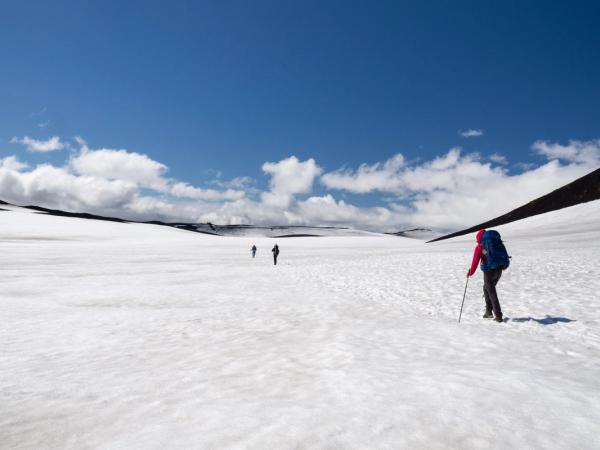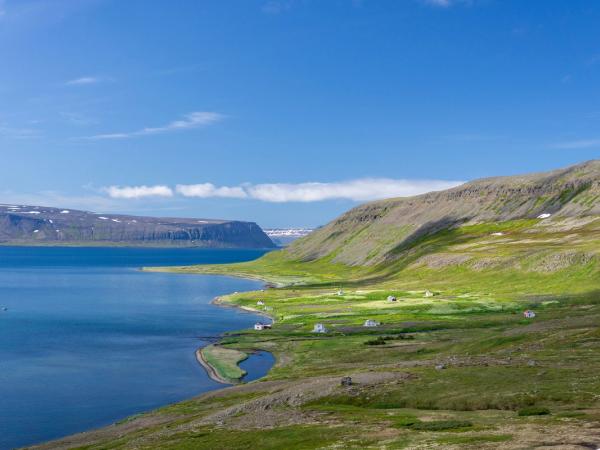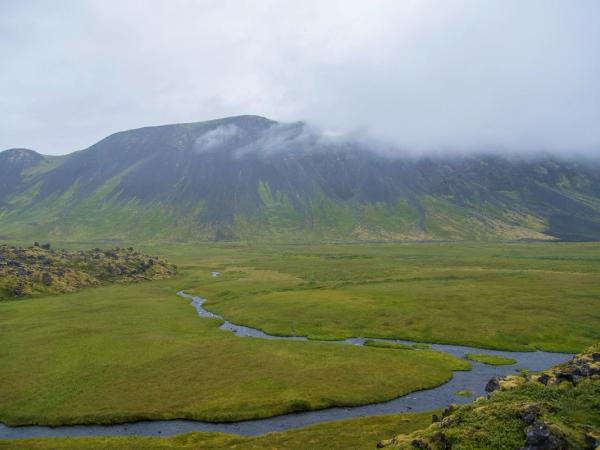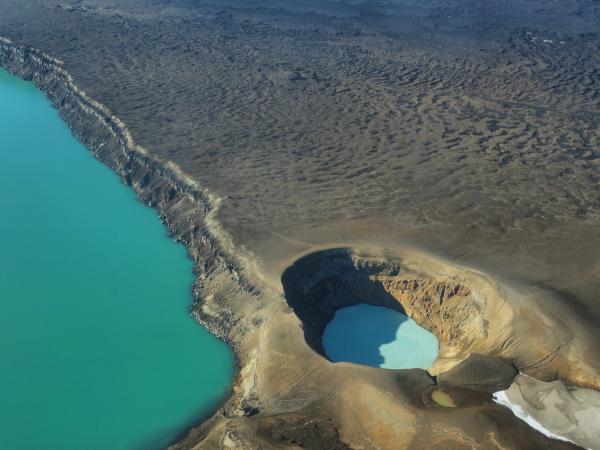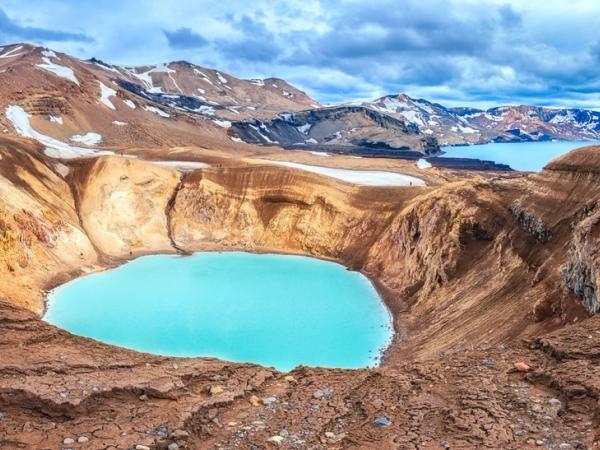
Hiking in Iceland: Nice Hikes & Tips
Nature doesn’t get much better than it does in Iceland. The whole country is a collection of amazing places with astonishing landscapes shaped by volcanic activity, glaciers, and waterfalls. Exploring the outdoors in this Nordic country is a fantastic experience, and there’s no better way to get to know some of the best things Iceland has to offer than by foot.
Iceland is a hiker's paradise. The country offers a diverse range of hiking trails, from easy walks through lush valleys to demanding multi-day treks across rugged terrains in remote areas. Whether you're an experienced adventurer or a casual day hiker, Iceland has something waiting for you.
In this guide, we’ll explore some of the best hikes in Iceland, providing a detailed overview of trails suitable for all levels of fitness and experience.
Key Takeaways
- Iceland is the perfect destination for hikers. The whole country is like a network of trails reaching some of the best places.
- There are trails for all kinds of levels, from nice strolls to more challenging ones.
- Some routes imply spending several days, and you can spend the night in huts or camping sites.
Hiking to Explore Iceland
There’s so much to see in Iceland. From geothermal valleys, glacial rivers, volcanic craters, and cascading waterfalls to vast lava fields, Iceland has a bit of everything. The best way to move around the country on a larger scale is by car. But roads don’t get everywhere, and some parts need to be covered on foot. There are a lot of hiking trails in Iceland that offer an immersive experience in some of the planet's most untouched landscapes. The island’s dramatic scenery constantly shifts. Every season brings something different to the table, drastically changing the same place to offer very different sides of it.
Hiking in Iceland also gives the opportunity to see the local flora and fauna up close. If you walk along a rail along the coast, you’ll have the chance to see the charming puffins nesting in the cliffs. Or spot seals swimming playfully in the sea or just sunbathing on rocks. In more remote areas, there are chances of seeing Arctic foxes.
Along the way, hikers might also pass through geothermal areas, with bubbling hot springs, steam vents, and volcanic craters that make Iceland such a unique hiking destination.
Difficulty Levels
Before hitting the trail, it’s essential to assess your fitness and experience level, as Iceland’s hiking trails range from easy paths to challenging routes. Some great places can be reached only after a very hard day of walking, so there’s no need to go there if you feel you’re not prepared.
- Easy: These hikes are generally short, with minimal elevation gain, well-marked paths, and little technical difficulty. They're suitable for beginners or families and provide rewarding views without being too demanding.
- Moderate: These trails involve some elevation change and uneven terrain but are manageable for hikers with average fitness levels. Expect hikes to last several hours, and pack accordingly.
- Difficult: Only for experienced hikers. These trails often include going up steep hills, crossing a river, and being exposed to the elements. Strong physical fitness is required, and hikers should be prepared for changing weather conditions and the possibility of using special equipment like crampons.
Best Single-Day Hikes in Iceland
There are hundreds of trails in Iceland that can be covered in a few hours. Here, you have some of the best.
Glymur Waterfall
The hike to Glymur is a must for those seeking scenic beauty combined with moderate adventure. Iceland’s second-highest waterfall is located in Hvalfjörður, just a short drive from Reykjavík. The trail leads through a green valley along the Botnsá River and requires hikers to traverse rivers and climb steep slopes.
The full trail is about 7 kilometers (4.3 miles) roundtrip and takes about 3-4 hours to complete. The path crosses a narrow bridge to end up getting a panoramic view of the 198-meter (650-foot) waterfall dropping into a deep gorge.
Reykjadalur Hot Springs
This trail is one of the most popular single-day hikes in Iceland, especially convenient if you’re staying in Reykjavík. This easy-to-moderate 6-kilometer (3.7 miles) hike goes through a geothermal valley and ends in a series of natural hot springs where hikers can relax after the walk.
Along the way, you’ll see bubbling mud pots, steam vents, and beautiful green hills covered in moss. The path is well-marked and takes about 1.5-2 hours to reach the springs. It's an excellent choice for hikers looking for a blend of outdoor adventure and relaxation.
Mount Esja
Another great single-day option located just outside of Reykjavík. Esja is a 914 m (2,999 ft) mountain with spectacular views of the city and the surrounding bay. The trail is about 7 kilometers (4.3 miles) roundtrip, and the hike to the summit - known as Steinn, “rock” in Icelandic - takes around 2-3 hours. The final part to the top is a bit tricky, but the reward is worth the effort. The views from the summit are unbeatable.
This hike is a perfect option for those seeking a quick escape into nature from Reykjavík.
Fagradalsfjall Volcano
If you want to see what a recently formed lava field looks like, the hike to Fagradalsfjall is an unforgettable experience. The volcano, which erupted in 2021 and again in 2022, offers hikers a unique opportunity to walk through a field that has just been created by volcanic action. The trail is around 14 kilometers (8.7 miles) and offers great views of the blackened landscape. I
t's a moderate hike but can be challenging in certain parts due to the rough terrain. Hikers should stick to marked paths for safety.
Látrabjarg Cliffs
If you're visiting the Westfjords, a hike along the Látrabjarg Cliffs is a must. This 7-kilometer (4.3 miles) roundtrip hike takes you by the coast in the most isolated region of the country, where the cliffs rise 441 meters (1,447 feet) above the North Atlantic Ocean.
This area is home to a variety of seabirds, including puffins, razorbills, and guillemots. The hike is easy and suitable for families.
Arnarstapi to Hellnar
Located on the Snæfellsnes Peninsula, the path that connects the towns of Arnarstapi and Hellnar is a beautiful choice. This coastal walk is a scenic 2.5-kilometer (1.5-mile) trail that looks over cliffs, lava fields, and unique rock formations. The hike starts at the small fishing village of Arnarstapi and follows the coastline to Hellnar.
Along the way, you'll pass by the natural stone arch Gatklettur and see basalt columns rising out of the sea. This easy walk is perfect for those looking to explore Iceland's coastline while enjoying a relatively short, flat hike.
Hengifoss and Litlanesfoss
The trail to Hengifoss, another of Iceland's tallest waterfalls, is a rewarding hike located in East Iceland. The trail is approximately 2.5 kilometers (1.5 miles) one way, with an elevation gain of 300 meters (984 feet), making it a moderate challenge for most hikers. As you ascend, you’ll first encounter Litlanesfoss, a striking waterfall framed by tall, hexagonal basalt columns, before continuing to the main attraction, Hengifoss. This 128-meter (420-foot) cascade falls over colorful volcanic cliffs with red and black walls, creating a dramatic backdrop.
The roundtrip hike normally takes about 2 hours, though it can be extended if you spend time watching the falls or having a little picnic. The trail also includes views of Lagarfljót Lake and the surrounding landscape, making it a must-do for visitors to the eastern part of the country.
Best Multi-Day Hikes in Iceland
If you’re looking for a more immersive experience, there are several routes that take several days. This means you’ll have to spend the night, but don’t worry, there are options to do so.
Laugavegur Trail
Without a doubt, this is Iceland's most famous multi-day hike. The Laugavegur Trail is an essential adventure for any serious hiker. It’s a 55-kilometer (34-mile) route that goes from Landmannalaugar to Þórsmörk, taking you through some of Iceland’s most diverse landscapes.
Starting in the geothermal region of Landmannalaugar, known for its colorful rhyolite mountains and hot springs, the trail passes through black sand deserts, glacier rivers, and green valleys.
Usually, people take around 4 days to complete it, and hikers can stay overnight in huts or campsites. The trail is accessible only in summer, from late June to early September.
Fimmvörðuháls Trail
The Fimmvörðuháls Trail, often combined with the Laugavegur Trail, is a challenging but rewarding trek. This 25-kilometer (15.5 miles) trail takes you between two glaciers, Eyjafjallajökull and Mýrdalsjökull. The first one is the ice-capped volcano that infamously erupted in 2010, stopping air traffic in Europe for several days.
The trail ends at Skógafoss, one of Iceland’s most iconic waterfalls. This trail can be completed in one day – although it would take several hours - but it's also possible to camp or stay in huts along the way. If you connect it to Laugavegur, it becomes quite a long route.
Hornstrandir Nature Reserve
For those looking for a truly immersive, wild, and remote experience, get to this trail in the Westfjords. This part of the country is only accessible by boat, and its trails lead through dramatic fjords, steep cliffs, and snow-covered mountains. Hikes in Hornstrandir can take from 3 to 7 days, depending on the route.
It’s truly a wild experience because there are no services or infrastructure in the reserve, so hikers must be self-sufficient. This demanding but incredibly rewarding experience is only for very experienced adventurers.
Askja Caldera and Víti Crater
A great option for people seeking to get away from the crowds, but not as extreme as the one in Hornstrandir. This hike takes you to the Víti Crater in Askja, where a geothermal lake sits inside a caldera created by a massive volcanic eruption.
The surrounding landscape looks as if it was from another planet, with black sand and lava fields stretching as far as the eye can see. The hike can be completed in 2-3 days and is accessible during the summer months.
Lónsöræfi
This hidden gem is located in southeast Iceland, and it’s another great option to get away from the places most frequented by tourists. Known for its rugged, untouched beauty, this area features colorful rhyolite mountains, deep canyons, and glacial rivers. The multi-day trek through Lónsöræfi offers solitude and stunning views of Vatnajökull, Europe’s largest glacier.
Hiking in Different Seasons
Iceland's hiking trails change significantly depending on the season. While summer is the most popular hiking season because the weather conditions are the best for it, each season offers a different experience. It’s important to bear in mind that some routes are only open for a few weeks every year.
Summer (June to August)
Summer is the prime hiking season in Iceland. The long daylight hours and mild temperatures are perfect for exploring the country. Trails in remote areas, especially the Highlands, like the Laugavegur and Hornstrandir trails, are only accessible in summer, as they are closed the rest of the year due to snow and harsh conditions.
Autumn (September and October)
Autumn is a beautiful time to hike in Iceland, as the changing colors of the vegetation add a new layer of beauty to the landscape. However, it changes a lot from early September to late October. The weather becomes more unpredictable, with the temperature and daylight hours going down as the weeks go by.
Some highland trails may already be closed by late, but trails near Reykjavík or along the coast are still accessible. Autumn is also shoulder season, with fewer tourists on the trails.
Winter (November to March)
Winter hiking in Iceland is a hard experience. With almost no daylight hours, especially by the end of December, really low temperatures, and snow everywhere, most hikes are inaccessible without proper equipment and guidance.
On the other hand, it’s a great time to get on a guided glacier or ice cave tour. Even if you’re an experienced hiker, visiting the glaciers must be done with an expert guide. They will provide not only great information but also the equipment required.
Spring (April and May)
Spring is a transitional season in Iceland, with snow melting in the lowlands and trails beginning to reopen, but the Highlands are still inaccessible. Spring is also a quieter time to visit, with fewer crowds and mild weather. However, hikers should still be prepared for unpredictable conditions, including snow patches and muddy trails.
What to Pack for Hiking in Iceland
The weather in Iceland, regardless of the season, is unpredictable and can change in minutes. For this reason, packing properly can have a huge impact on your hiking experience.
- Base layers: Thermal or moisture-wicking base layers will help regulate your body temperature.
- Mid-layer: A fleece or wool sweater provides warmth in colder conditions.
- Waterproof and windproof clothing: Waterproof jacket and pants to protect against rain and wind.
- Sturdy hiking boots: Waterproof boots with good ankle support are a must, as many trails involve river crossings or uneven terrain.
- Backpack with essentials: Include a first aid kit, water bottle, snacks, a map or GPS, and a fully charged phone. For longer hikes, especially those in remote areas, consider bringing a power bank or satellite communication device.
- Trekking poles: These can be useful for balance on uneven terrain or river crossings.
- Crampons: Essential for winter hikes or glacier walks. They provide extra traction on icy surfaces.
- Sunglasses and sunscreen: Even in winter, the reflection of sunlight off snow or glaciers can be bad for your eyes.
Travel Tips
While hiking along the beautiful landscapes keep some things in mind.
Respect Nature
Iceland’s natural landscapes are fragile and protected by strict environmental regulations. Always stick to marked paths to avoid damaging the ecosystem, particularly in volcanic and highland areas where moss and vegetation take decades to regenerate if disturbed.
Check Weather Conditions
Iceland’s weather can change rapidly. Always check the weather forecast and trail conditions before starting a hike. Also, you may need a car to get to some areas where the trails begin. Check the road conditions as well to avoid unpleasant surprises.
Book Accommodation in Advance
If you’re hiking a multi-day trail like the Laugavegur, be sure to book mountain huts or campsites well in advance, as they fill up quickly, especially during the summer season. Huts provide basic shelter, but you’ll need to bring your own sleeping bag and supplies.
Guided Tours
For more challenging hikes, particularly those involving glaciers or remote regions, consider booking a guided tour. Guides know the local conditions very well, how to react to changes in the weather, and can ensure safety in difficult situations. This is especially important for glacier hikes, which require special equipment and experience.
Conclusion
Hiking in Iceland offers an incomparable opportunity to truly experience the country’s wilderness and spectacular landscapes. As we have seen, there are trails that go through volcanic lands, glaciers, and geothermal areas or that would take you to an impressive waterfall.
Even if you’re not an experienced hiker, there are routes available for all levels. You only need to prepare well, pack accordingly, and choose a trail that matches your level.

